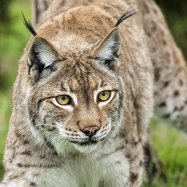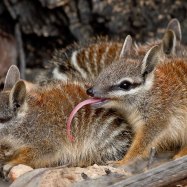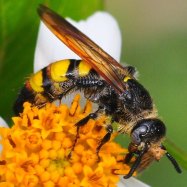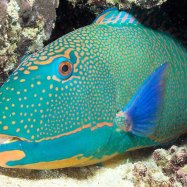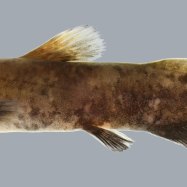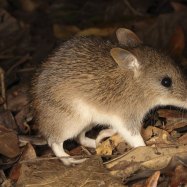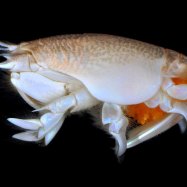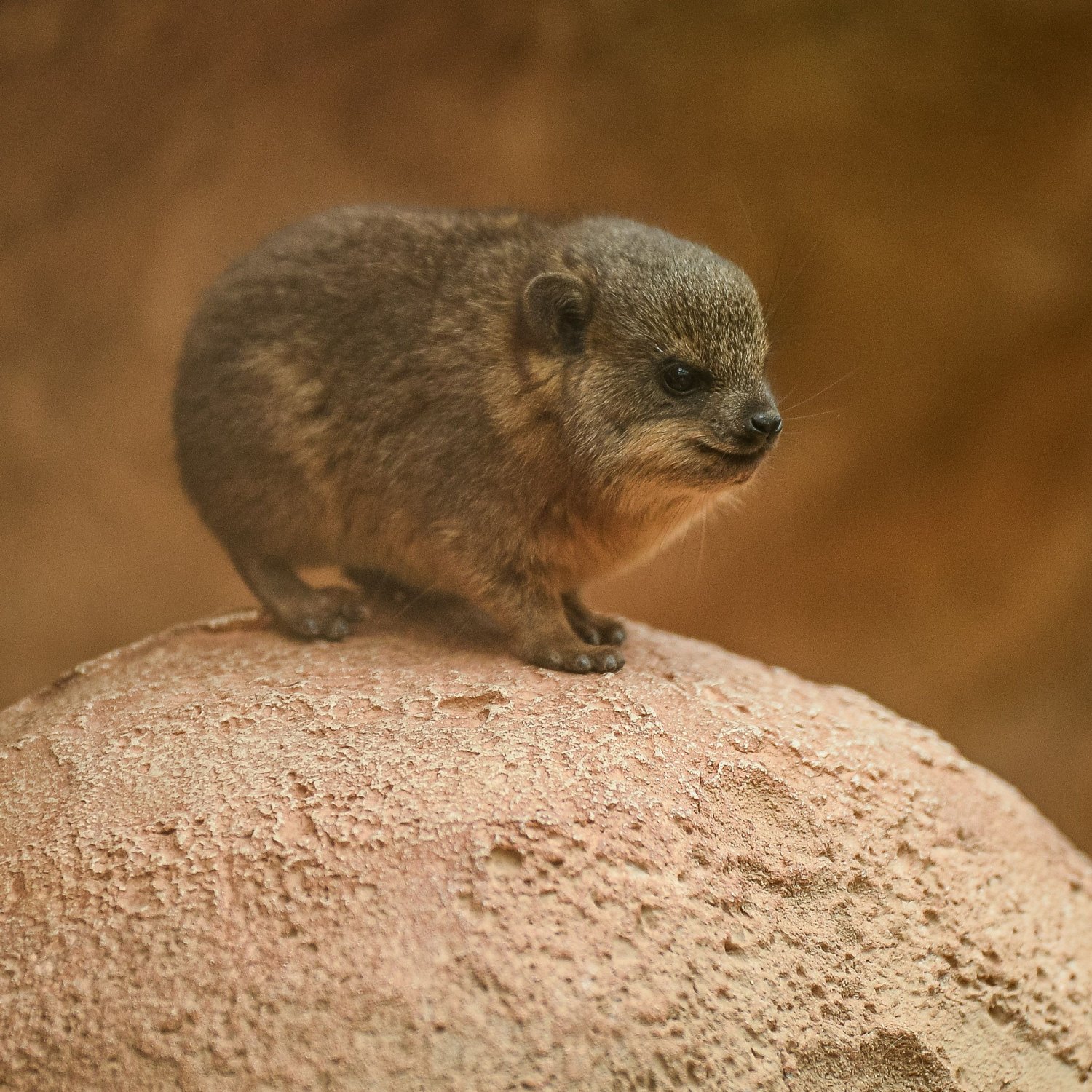
Rock Hyrax
40 to 50 cm
The Rock Hyrax, found in Africa, is a small and squat animal with a round body shape. Also known as rock rabbits, they are members of the Procaviidae family and can grow up to 40-50 cm in length. These endearing creatures are known for their distinctive calls, as well as their unique ability to sunbathe on rocks to regulate their body temperature. #RockHyrax #Procaviidae #AfricanAnimals
Animal Details Summary:
Common Name: Rock Hyrax
Kingdom: Animalia
Habitat: Rocky outcrops, cliffs, and boulders
The Fascinating World of the Rock Hyrax: A Small Yet Mighty Creature
The animal kingdom is filled with a diverse range of species, each with unique characteristics and behaviors. From the mighty predator to the tiny insect, there are countless creatures that roam the earth. Among these, there is one animal that often goes unnoticed but has a fascinating story to tell – the Rock Hyrax.Also known by its scientific name, Procavia capensis, the Rock Hyrax is a small yet mighty mammal that belongs to the order Hyracoidea Rock Hyrax. Its small size may make it easy to overlook, but this creature's incredible adaptability and interesting features are worth exploring. So, let's take a deeper look into the world of the Rock Hyrax and discover why it deserves recognition.
From Kingdom to Family: Understanding the Taxonomy of the Rock Hyrax
Before we dive into the world of the Rock Hyrax, let's start with its taxonomy. The taxonomy of an animal refers to its scientific classification, which helps us understand its evolutionary relationships and place in the animal kingdom. The Rock Hyrax belongs to the kingdom Animalia, meaning it is an animal that is multicellular, heterotrophic, and has specialized cells. It is also part of the phylum Chordata, which includes animals with a notochord, a hollow nerve cord, pharyngeal gill slits, and a post-anal tail at some point in their development.Next, we have the class Mammalia, which is made up of animals that are vertebrates, have hair, and produce milk to feed their young. Within this class, the Rock Hyrax belongs to the order Hyracoidea, which consists of small, plant-eating mammals that are mainly found in Africa and the Middle East. Finally, the Rock Hyrax is a member of the family Procaviidae, which includes the four living species of Hyraxes Redstart.
With this taxonomy in mind, we can already get a better understanding of the Rock Hyrax's place in the animal kingdom and its unique characteristics.
Habitat and Adaptations: Surviving in Rocky Terrain
Now that we know where the Rock Hyrax fits in the taxonomy, let's explore its natural habitat and how it has adapted to survive in its environment. The Rock Hyrax is mainly found in rocky outcrops, cliffs, and boulders, making it a remarkable climber. Its strong, sharp claws and padded feet allow it to navigate rocky terrain with ease.One of the most fascinating aspects of the Rock Hyrax's adaptation is its unique teeth. As a herbivorous animal, it needs specialized teeth to efficiently grind and break down plant material. The Rock Hyrax has a pair of upper and lower ever-growing incisors that work like chisels, allowing it to gnaw on tough vegetation.
Apart from its physical adaptations, the Rock Hyrax has also developed a behavioral adaptation to survive in its rocky habitat. It is active during the day but avoids the hottest part of the day by retreating into crevices and caves. This behavior helps it conserve energy and regulate its body temperature in hot climates.
A Herbivore with a Diverse Diet
As mentioned earlier, the Rock Hyrax is a herbivore, meaning its diet consists entirely of plant matter. However, its diet is more diverse than you may think. A study has shown that the Rock Hyrax has a varied diet, feeding on over 100 different plant species. It mainly eats leaves, twigs, and stems, but during the wet season, it also consumes flowers, fruits, and grasses.This diverse diet is possible due to the Rock Hyrax's ability to digest tough plant material. Similar to cows, it has a multi-chambered stomach that allows for the fermentation of plant fiber. This enables the Rock Hyrax to extract essential nutrients from its diet and thrive in its habitat.
Geographical Distribution and Origin: A Journey Through Time
The Rock Hyrax is native to Africa and the Middle East, with its geographical distribution spanning across Sub-Saharan Africa and parts of the Arabian Peninsula. However, its origin can be traced back to South Africa, making it a truly African creature.But how did the Rock Hyrax spread to other regions of Africa and the Middle East? To understand this, we must take a journey through time. About 40 million years ago, the African continent was much closer to South America, creating a land bridge between the two continents. This land bridge allowed the ancestors of the Rock Hyrax to migrate from Africa to South America.
But as the continents drifted apart, the Rock Hyrax's ancestors were left stranded in South America. Over time, these ancestral hyraxes evolved into the New World hyrax, a distant relative of the Rock Hyrax found in South America today.
Meanwhile, the Rock Hyrax's ancestors remained in Africa and continued to evolve, leading to the Rock Hyrax we know today. This fascinating journey through time shows the incredible adaptability and survival skills of the Rock Hyrax.
Appearance and Physical Characteristics: Grayish Brown to Rufous with a Round Shape
The Rock Hyrax may be small, but it has a distinct appearance that sets it apart from other animals. It has a stocky, round-shaped body with a short neck, snout, and small ears. Its fur is typically grayish brown, but it can also range from rufous to light brown, depending on its geographic location. This variation in coloration is an adaptation to help it blend in with its natural surroundings and avoid predators.The Rock Hyrax's body measures around 40 to 50 cm in length, and it can weigh anywhere from 2.5 to 5.5 kg. Its small size may make it seem vulnerable, but the Rock Hyrax has several defense mechanisms to protect itself, such as its sharp teeth, fast speed, and agility.
A Surprising Connection to Elephants: Shared Behaviors and Traits
Despite their physical differences, the Rock Hyrax and elephants have a surprising similarity – they both have specialized toenails used for defense and communication. The Rock Hyrax has thick, flattened toenails on its hind feet that are used to leave scent marks on rocks, indicating its territory.Similarly, elephants have unique toenails that are used for digging and providing traction. These toenails also play a role in their communication, with elephants using them to produce vocalizations, known as rumbles, that can travel great distances.
Aside from this physical connection, both the Rock Hyrax and elephants also have a highly social nature. The Rock Hyrax lives in groups, or colonies, of multiple individuals, typically led by an older, more experienced male. Similarly, elephants also live in herds, with a matriarch leading the group.
The Threats and Conservation Status of the Rock Hyrax
Like many other small mammals, the Rock Hyrax faces threats to its survival. Its rocky habitat may provide protection from predators, but it is also highly vulnerable to human activities such as quarrying and urbanization. These activities destroy the Rock Hyrax's natural habitat and disrupt its way of life.The Rock Hyrax is also hunted for its meat and oils in some parts of Africa, which has led to a decline in its population. However, it is not currently considered a threatened species and is listed as Least Concern on the IUCN Red List.
Despite its current conservation status, it is essential to raise awareness and protect the Rock Hyrax and its habitat to ensure its survival in the long term.
In Conclusion: The Mighty Rock Hyrax
The Rock Hyrax may be small in size, but it is a mighty creature with a fascinating story to tell. From its unique adaptations and diverse diet to its surprising connection with elephants, there is much to learn and appreciate about this small yet remarkable animal.As we continue to discover more about the animal kingdom and its inhabitants, let us not forget to give the Rock Hyrax the recognition it deserves. In a world where size often determines significance, the Rock Hyrax proves that it is not the size that matters, but rather the mighty spirit and adaptability within.

Rock Hyrax
Animal Details Rock Hyrax - Scientific Name: Procavia capensis
- Category: Animals R
- Scientific Name: Procavia capensis
- Common Name: Rock Hyrax
- Kingdom: Animalia
- Phylum: Chordata
- Class: Mammalia
- Order: Hyracoidea
- Family: Procaviidae
- Habitat: Rocky outcrops, cliffs, and boulders
- Feeding Method: Herbivorous
- Geographical Distribution: Sub-Saharan Africa and the Middle East
- Country of Origin: South Africa
- Location: Africa
- Animal Coloration: Grayish brown to rufous
- Body Shape: Small, squat, and round
- Length: 40 to 50 cm

Rock Hyrax
- Adult Size: 4 to 5 kg
- Average Lifespan: 10 to 12 years
- Reproduction: Sexual
- Reproductive Behavior: Polygynous
- Sound or Call: Loud, high-pitched calls
- Migration Pattern: Non-migratory
- Social Groups: Group-living
- Behavior: Diurnal
- Threats: Predation by eagles, jackals, and large cats
- Conservation Status: Least Concern
- Impact on Ecosystem: Seed dispersal
- Human Use: None
- Distinctive Features: Sharp incisors and prominent tusks
- Interesting Facts: Rock hyraxes are the closest living relatives of elephants.
- Predator: Eagles, jackals, large cats
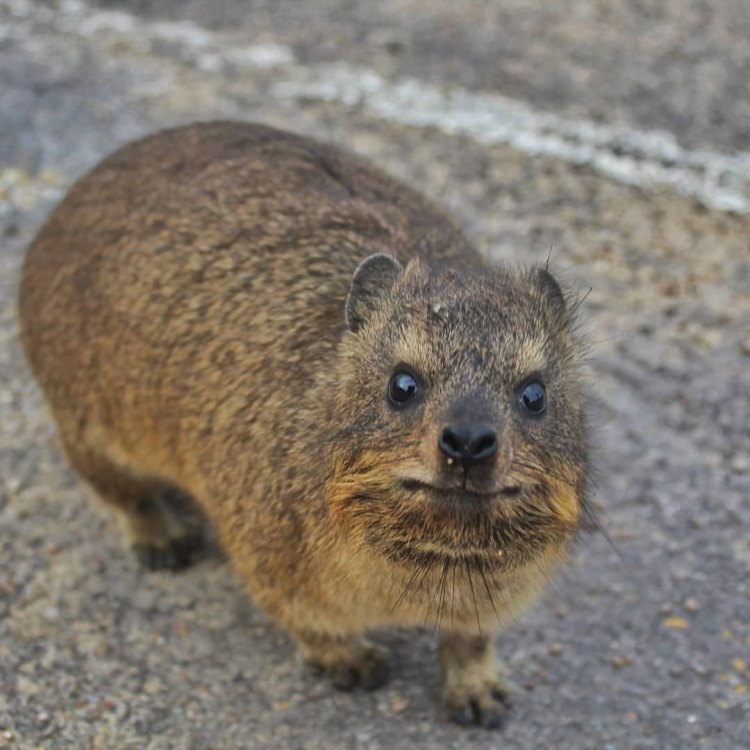
Procavia capensis
The Fascinating World of Rock Hyraxes: The Elephant's Unexpected Cousin
Imagine a creature that is only about the size of a guinea pig but shares many characteristics with the mighty elephant. This may seem like an unlikely scenario, but this is exactly the case with the rock hyrax. These small and elusive creatures are often overlooked, yet they possess unique characteristics that set them apart from other animals. From their interesting reproductive behavior to their important role in seed dispersal, rock hyraxes are truly an intriguing species PeaceOfAnimals.Com. In this article, we will delve into the world of rock hyraxes and discover what makes them so special.Size and Lifespan
Rock hyraxes are relatively small animals, weighing only 4 to 5 kg when fully grown. They measure around 50 cm in length and have a short, stocky build with a rounded head, small ears, and a short tail. Despite their small size, they have sharp incisors and prominent tusks, which are used for defense and communication within their social groups.
On average, rock hyraxes live for 10 to 12 years in the wild. However, they have been known to live up to 15 years in captivity. They are found in various habitats across Africa and the Middle East, including rocky outcrops, savannas, and woodlands. Due to their adaptable nature, they have been able to thrive in a variety of environments and are not considered endangered.
Reproduction and Behavior
Rock hyraxes are sexually reproducing animals and have a polygynous mating system, meaning that one male mates with multiple females Repenomamus. Mating typically occurs during the summer months when food is abundant, and females give birth to one or two young after a gestation period of 7 to 8 months. The young are weaned at around 3 months old and reach sexual maturity at 2 to 3 years old.
These creatures are also known for their vocal abilities, emitting loud, high-pitched calls that can be heard from long distances. These calls serve as a form of communication between individuals within their social groups and may also act as a warning signal to potential predators. Interestingly, their social groups are often made up of several families, consisting of one dominant male, multiple females, and their offspring.
Behaviorally, rock hyraxes are diurnal, meaning they are active during the day and rest at night. They are excellent climbers and spend much of their time on rocky outcrops, using their sharp claws to navigate through steep and uneven terrain. Due to their elusive nature, they are not often seen by humans, making them quite a mystery to many.
Threats and Conservation Status
Like many animals in the wild, rock hyraxes face threats from various predators, including eagles, jackals, and large cats. These predators primarily target young hyraxes, as adults have sharp incisors and tusks that serve as a defense mechanism. However, with their ability to climb up steep cliffs and rock faces, these creatures are quite adept at avoiding predators.
Despite these threats, rock hyraxes are classified as a species of 'Least Concern' by the International Union for Conservation of Nature (IUCN) Red List. This is mainly due to their wide distribution and adaptable nature, which allows them to survive in a variety of habitats. Additionally, there are no significant human uses for rock hyraxes, which means they are not at risk of overexploitation.
Impact on Ecosystem
While rock hyraxes may seem like insignificant creatures, they play a crucial role in their ecosystems. One of their most important contributions is their role in seed dispersal. As they move around and forage for food, they consume various fruits and seeds, which are then dispersed through their droppings. This helps to maintain a healthy balance in their environments and allows for the growth of new plants.
Interestingly, rock hyraxes are also known to create burrows in rocky outcrops, which serve as shelter for other small animals. This makes them an essential part of the ecosystem's food chain, providing a safe haven for smaller creatures to hide from predators.
Distinctive Features and Interesting Facts
One of the most unique features of rock hyraxes is their sharp incisors and prominent tusks. These teeth are continuously growing, allowing them to maintain a sharp edge and use them for various purposes, including defending against predators and establishing dominance within their social groups.
But perhaps the most fascinating fact about rock hyraxes is their close relationship to elephants. These small, furry creatures are the closest living relatives of elephants, belonging to the same order as their much larger cousins. While it may be hard to imagine such a small animal having any ties to one of the largest land mammals, it serves as a testament to the diverse and complex nature of the animal kingdom.
Conclusion
In conclusion, rock hyraxes may be small and elusive, but they possess unique characteristics that set them apart from other animals. From their interesting reproductive behavior to their important role in seed dispersal, these creatures have a significant impact on their ecosystems. Their sharp incisors and prominent tusks, along with their surprising relationship to elephants, make them an intriguing species worth learning more about. By shining a light on these often-overlooked creatures, we can gain a better understanding of the diverse and fascinating world of wildlife.
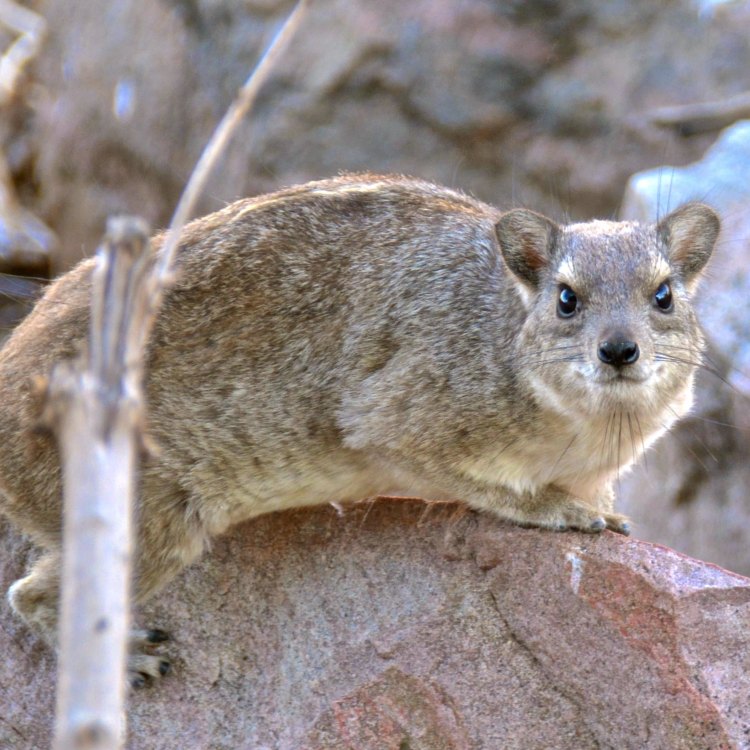
The Fascinating World of the Rock Hyrax: A Small Yet Mighty Creature
Disclaimer: The content provided is for informational purposes only. We cannot guarantee the accuracy of the information on this page 100%. All information provided here may change without prior notice.



